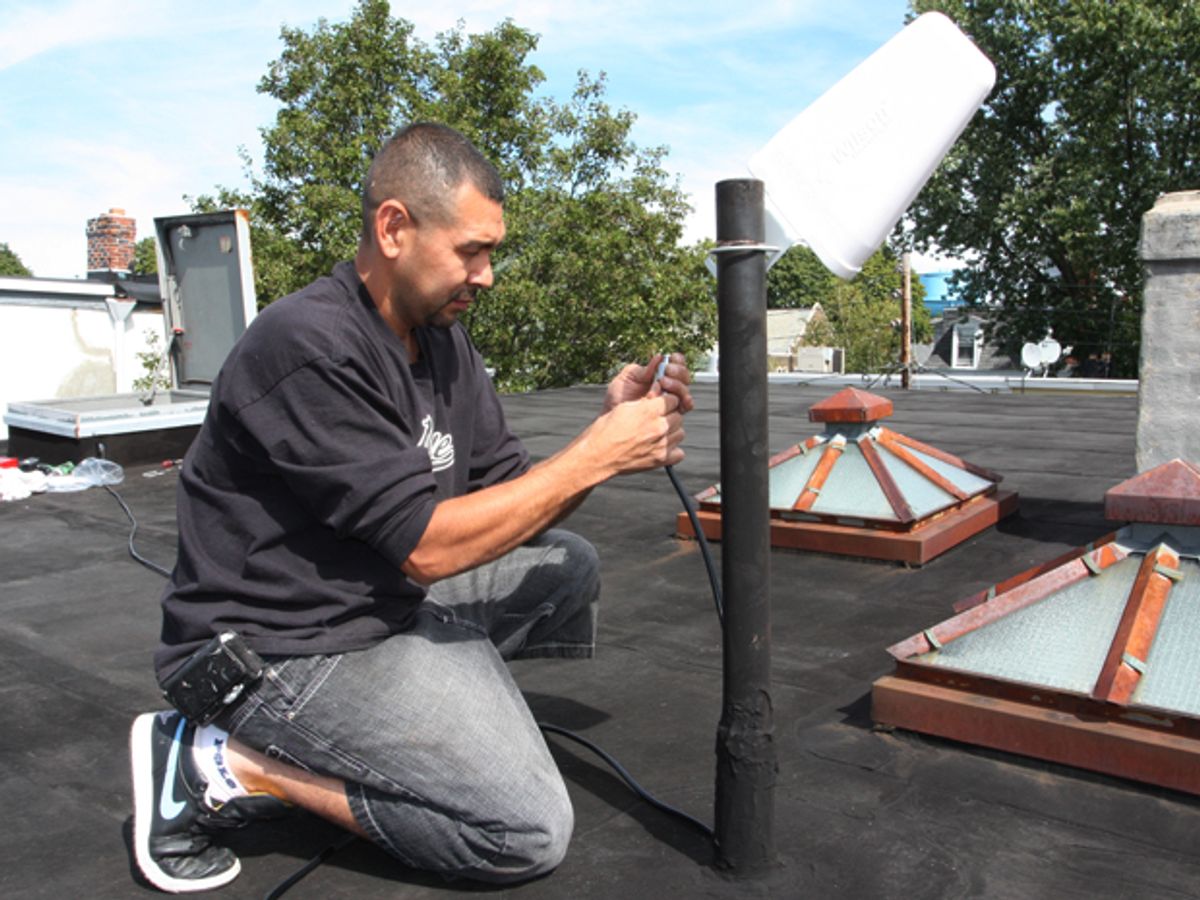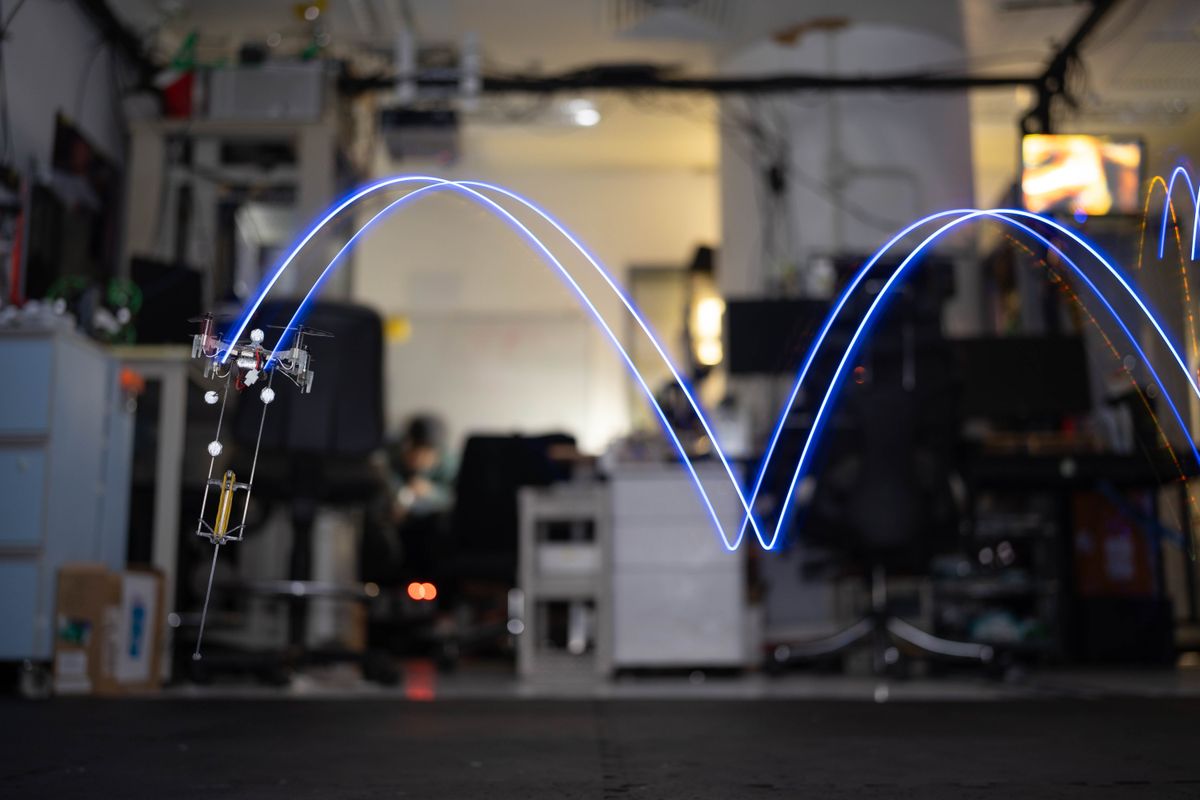
Cellphone-signal strength is a lot like taxicab availability in New York City: perfectly adequate in theory but all too often disappointing in reality. Many of us have loaded up our smartphones with streaming-media apps, only to find that they are generally useless without a 4G signal. The bottom line is that 4G service is all too often a shining but elusive promised paradise in a vast 3G wasteland.
Unfortunately, I live in that wasteland. In the commercial center of the quaint village of Sea Cliff, N.Y., where I live, cellphone-signal strength is frequently abysmal. I’ve made repeated complaints to Verizon Wireless, my carrier, which achieved nothing other than Verizon’s acknowledgement that my village was a “known trouble spot.”
The problem is more than a nuisance for me because I depend on Verizon’s wireless network for Internet access in my apartment. As I don’t want cable television or a landline telephone, it doesn’t make sense for me to pay close to US $100 a month for a wired connection.
And yet what I am doing seems to lack sense, too. With my cellphone, an old Samsung Droid Charge, I am typically able to get only a 3G signal in my apartment, with a strength of one or two bars out of five. Perhaps 15 percent of the time I get a one-bar 4G signal. Dropouts and disconnections during phone calls are regular occurrences.
I figured this had to be a problem that was solvable with technology. Surely somebody must offer a large-ish, high-performance outdoor microwave antenna and amplifier that could give me respectable signal strength in my apartment. Indeed, I discovered that on 20 February 2013, the U.S. Federal Communications Commission had approved the use of such boosters in the United States.
It didn’t take me long to find Wilson Electronics, a leading maker of cellphone-signal boosters in the United States. The company was kind enough to send me a kit including a wideband directional antenna, for picking up the signal outdoors; a wideband panel antenna, for spreading the signal indoors; and its AG Pro Quint amplifier, to put in between them to boost the signal. Both of the antennas are modest in size—roughly as big as a large paperback book. The setup is capable of boosting the four different 3G bands commonly used by U.S. carriers, as well as the 700-megahertz band used by Verizon 4G LTE. The total cost of the three components is about $900.
I used this Wilson system for several months and my experience can be summed up as follows. If you normally get a weak 3G signal on your phone, the Wilson system will give you a stronger, reliable 3G signal. If you normally get a weak 4G signal on your phone, the Wilson system will give you a stronger, reliable 4G signal. What the system can’t do, at least in my apartment, is take a signal that’s typically 3G on your phone and give you a consistent 4G one on that same phone.
With the Droid Charge phone, the system boosted my 3G signal from one or two bars to a consistent three or four out of five. With the amplifier on, voice telephony couldn’t be better—there were never any dropouts or abruptly ended calls. But what I really wanted was a rip-roaring 4G signal, because only that could give me fast Internet access for my computer and other devices. And I didn’t get it. In fact, with the amplifier on, the 3G signal overpowered my 4G signal, so I almost never got a 4G signal at all.
However, the situation was completely different when I borrowed a brand new Samsung Galaxy S5 to try in my apartment. With the Wilson booster system off, the S5 typically got one or two bars of 4G signal. With the Wilson booster turned on, it got a reliable three or four bars of 4G.
The Wilson amplifier has separate gain controls for each of the bands it can amplify. There is also an LED indicator, which is green if the gain is not excessively high and red if the gain is too high, causing an oscillation. This oscillation is basically a feedback-loop problem: It occurs when the signal being broadcast from the internal antenna is being picked up by the outdoor antenna. Such an oscillation is a problem because it can interfere not only with your cellphone reception but with your neighbors’ as well.
For the 3G bands I could turn the amplifier gain up quite high, to about 85 to 100 percent before the LED went red. But for the crucial 4G band, I could not turn the gain up past about 30 percent without getting a red light.
I spoke to a very helpful Wilson tech, who explained that I needed to turn down the 3G bands and also find a way to up the gain on the 4G signal without hitting the red light. He said it might be necessary, for example, to reorient the outdoor antenna, which was on the roof of my apartment building, so that it was actually slightly off-axis, which could allow for higher gain on the 4G signal without oscillation.
So after fiddling with the outdoor antenna for about an hour—Wilson was kind enough to send a local tech to help out—we found an orientation that allowed me to raise the 4G gain to about 50 percent. Unfortunately, it wasn’t enough to give me a 4G signal on the old Droid Charge phone. And, oddly, even with the 3G amplifiers turned all the way down, and the 4G turned to about 50 percent, I still could not get a 4G signal on the Droid Charge.

What was the problem? I may never know. But in its instruction booklet [PDF], Wilson specifies a minimum separation distance between the outdoor and indoor antennas of “20 vertical feet” or “50 horizontal feet.” I was able to achieve, but just barely, the 20-foot separation, and I couldn’t get anything like 50 horizontal feet. The booklet goes on to declare that in some situations “75 feet of horizontal separation may be necessary.”
Unfortunately, I was unable to provide that kind of separation in my modest apartment—which isn’t even 75 feet long—limited as I was to a fixed location for the outdoor antenna on the roof of the building. And that inability may explain my lack of success in boosting the 4G signal on the Droid Charge. Judging by reviews of the unit online, many users have had excellent success with the system, although it is not always clear from their accounts whether any of them managed to turn a weak 3G signal on their phone into a decent and consistent 4G one.
If you have crummy cellphone coverage and a residence in which you have some leeway in the places where you can install outdoor and indoor antennas, the Wilson system will undoubtedly help you. But for me, in the apartment I live in now, the only way I am going to enjoy consistent 4G service is by plunking down $649.00 for a Samsung S5. And by keeping the Wilson booster on.
Glenn Zorpette is editorial director for content development at IEEE Spectrum. A Fellow of the IEEE, he holds a bachelor's degree in electrical engineering from Brown University.




